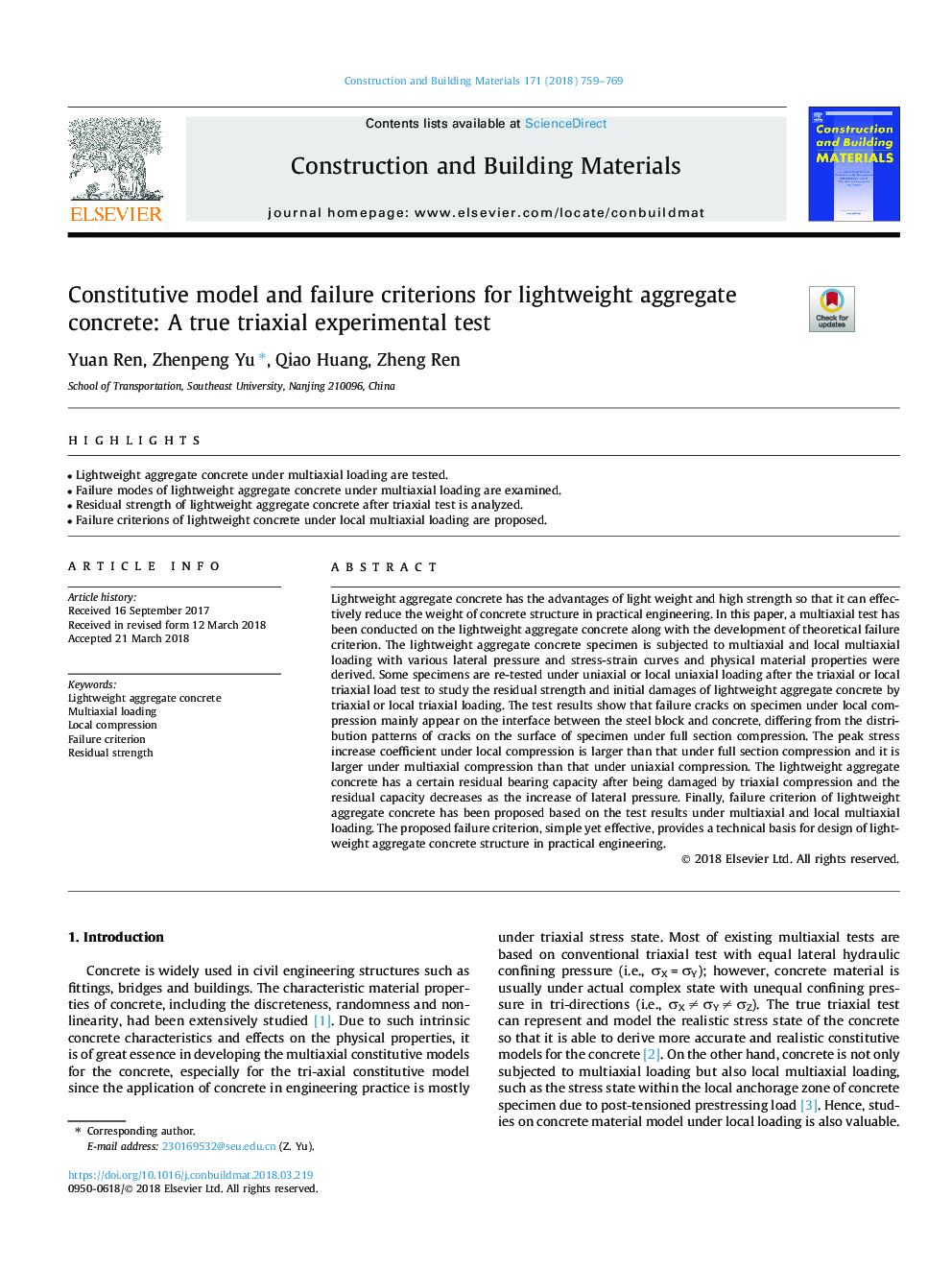| Article ID | Journal | Published Year | Pages | File Type |
|---|---|---|---|---|
| 6714357 | Construction and Building Materials | 2018 | 11 Pages |
Abstract
Lightweight aggregate concrete has the advantages of light weight and high strength so that it can effectively reduce the weight of concrete structure in practical engineering. In this paper, a multiaxial test has been conducted on the lightweight aggregate concrete along with the development of theoretical failure criterion. The lightweight aggregate concrete specimen is subjected to multiaxial and local multiaxial loading with various lateral pressure and stress-strain curves and physical material properties were derived. Some specimens are re-tested under uniaxial or local uniaxial loading after the triaxial or local triaxial load test to study the residual strength and initial damages of lightweight aggregate concrete by triaxial or local triaxial loading. The test results show that failure cracks on specimen under local compression mainly appear on the interface between the steel block and concrete, differing from the distribution patterns of cracks on the surface of specimen under full section compression. The peak stress increase coefficient under local compression is larger than that under full section compression and it is larger under multiaxial compression than that under uniaxial compression. The lightweight aggregate concrete has a certain residual bearing capacity after being damaged by triaxial compression and the residual capacity decreases as the increase of lateral pressure. Finally, failure criterion of lightweight aggregate concrete has been proposed based on the test results under multiaxial and local multiaxial loading. The proposed failure criterion, simple yet effective, provides a technical basis for design of lightweight aggregate concrete structure in practical engineering.
Keywords
Related Topics
Physical Sciences and Engineering
Engineering
Civil and Structural Engineering
Authors
Yuan Ren, Zhenpeng Yu, Qiao Huang, Zheng Ren,
